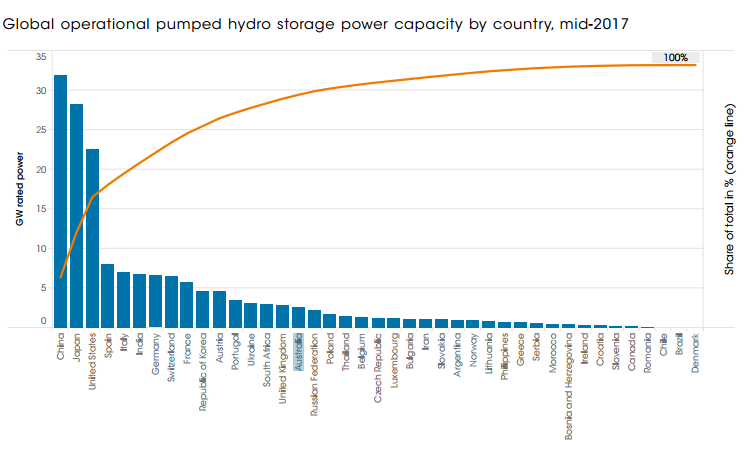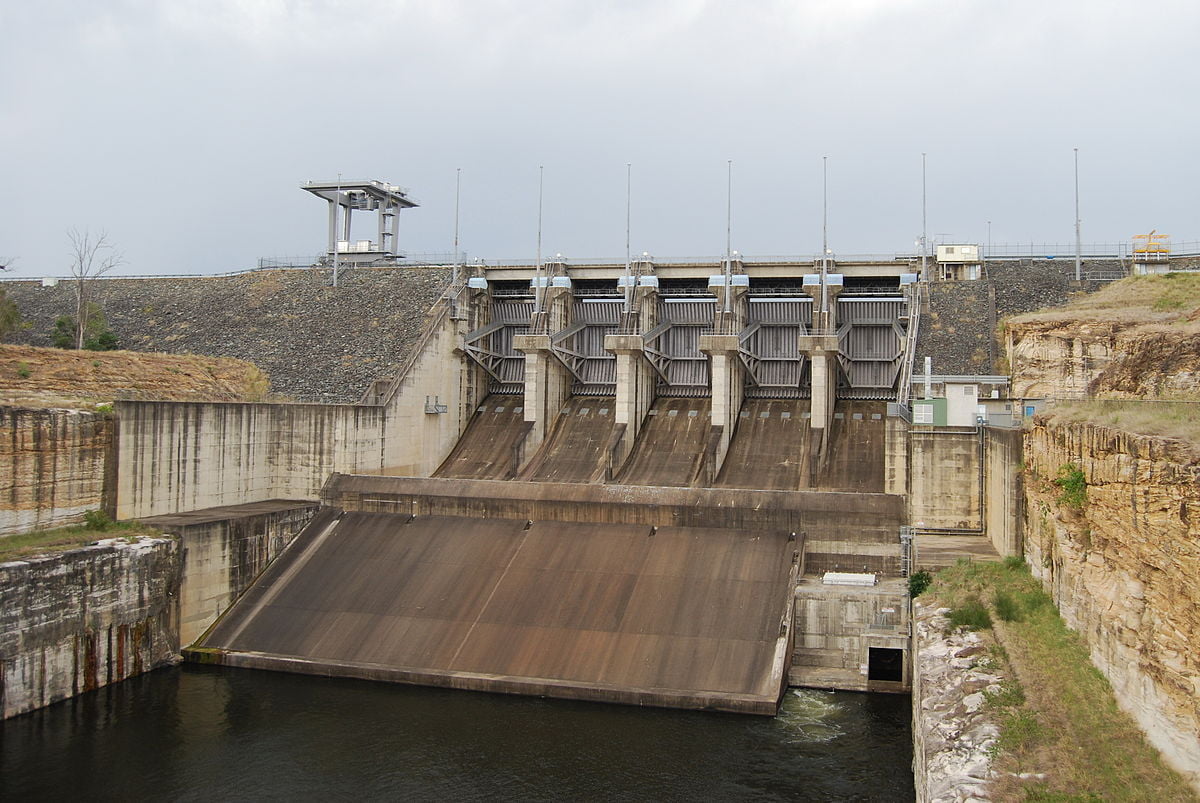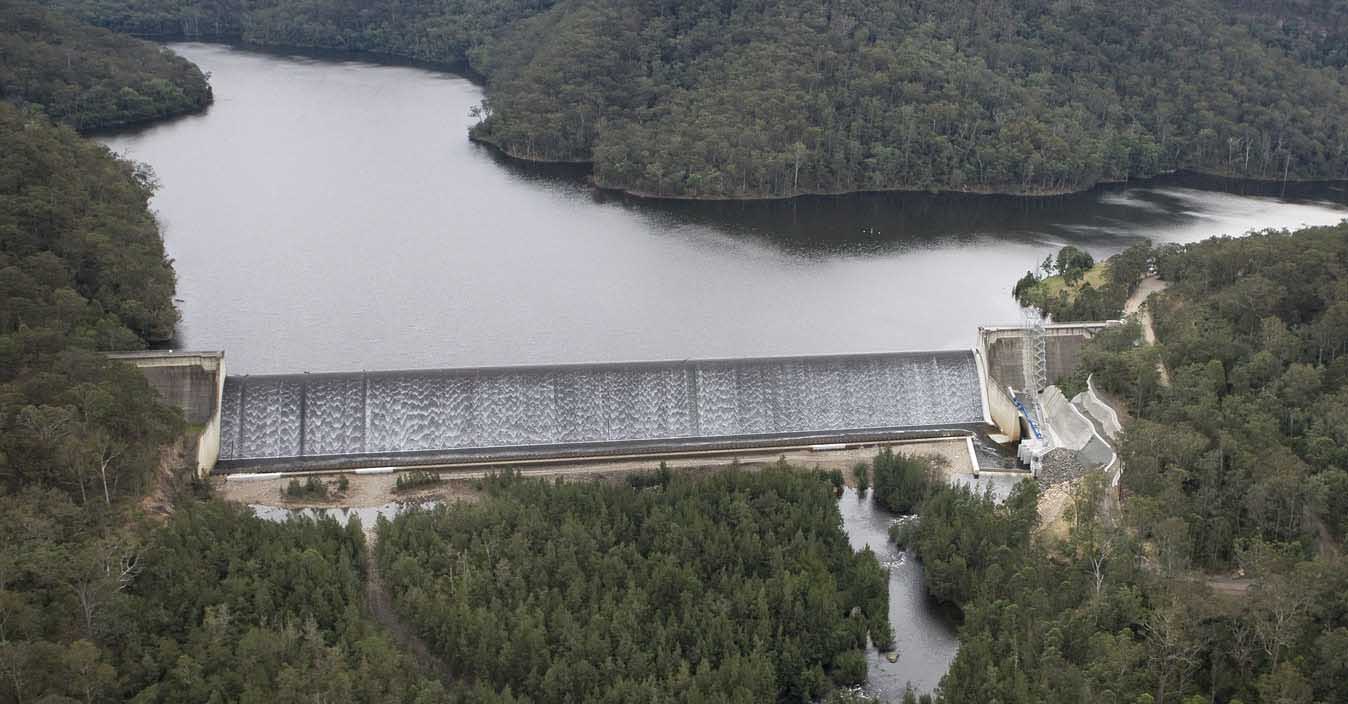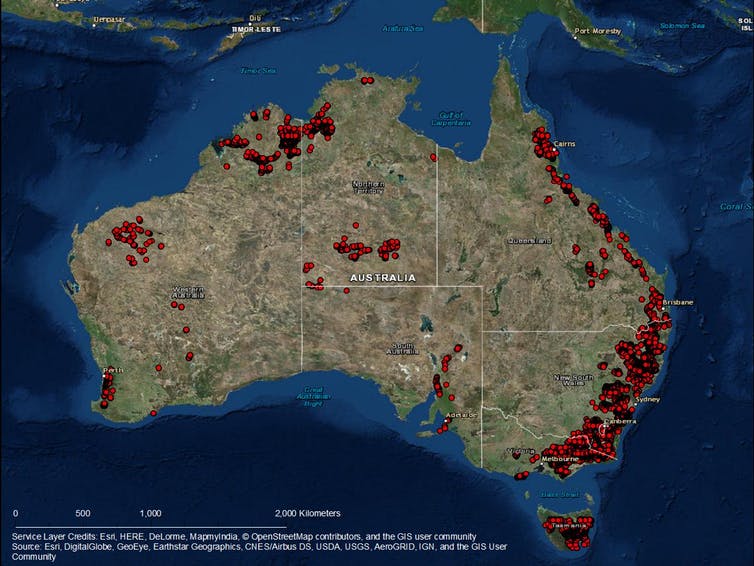Pumped hydro power has often been touted as the answer to all of Australia’s energy supply problems. With plenty of suitable sites for pumped hydro plants and its ability to generate electricity very quickly, it makes many wonder why we don’t use it more.
Key points on Pumped Hydro Power:
- Pumped hydro is not cheap – but it can solve shortages almost immediately
- Australia ranks number 16 in the world for pumped hydro capacity
- Pumped hydro accounts for 8% on the National Energy Mix
- Pumped hydro accounts for 46% of renewable energy
- 22,000 sites with a potential of 67,000 GWh
- Australia could become 100% renewable-powered in two decades with hydro
How does it work?
To understand the concept, we need to take a basic physics lesson. Pumped hydro – also termed Pumped-storage hydroelectricity (PSH), or pumped hydroelectric energy storage (PHES) – is technically classified as stored energy. It is not quite a battery, because it does not involve a chemical process. Water is pumped from a lower elevation to a higher elevation and stored in a reservoir at higher altitude. When needed, the floodgates are opened and the water flows down into turbines at a lower altitude to generate electricity.
What is the difference between Pumped Hydro and Hydroelectric Generation?
Pumped hydro is not the same as hydroelectric dam energy generation. With dams, the water flows through its natural course and is then forced through turbines to create energy at very little to no cost at all.
Pumped hydro, on the other hand, incurs a cost, because the water has to be pumped to a higher elevation, which of course requires electricity.
The plants balance this cost factor by purchasing electricity and pumping water uphill when there is a surplus and it is cheap. The pumping process makes hydro plants net consumers overall, but they increase revenue by selling electricity during peak demand when prices are much higher.
Why is pumped hydro becoming more popular and does it help the National Energy Mix?
The greatest benefit of pumped hydro is that energy is generated almost immediately. Usually, plants will be feeding electricity into the grid within 60 seconds of the floodgates being opened. This means that hydro is an ultrafast response to a shortage on the grid. In technical terms, hydro has very little inertia.
Coal and gas plants take quite some time to generate enough heat and steam to get the turbines rolling and generating power. This would mean that while there is a spike in demand, there is simply not enough power to meet it while the generators come up to speed.
Hydro can meet the spike almost immediately. It does not have the immediate effect of a battery, such as the Tesla one in South Australia, but it is an excellent stop-gap and can allow other forms of generation to build up slowly to spread the load. It is also a viable option when the wind isn’t blowing and the sun isn’t shining.
It also means that batteries can also be kept for dire situations. Hydro operations usually last for about half a day. Once the crisis is over, the pumping process can begin once more and the reservoir can be refilled again.
How does Australia fare in terms of pumped hydro generation?

Given the abundance of suitable sites around the country, you might think that Australia is one of the big players in hydro. We should be, but the reality is that we are not.
According to the International Renewable Energy Agency, Australia comes in at number 16 in the world, way behind the world leaders China, the US and Japan. Australia has 2.5 GW of pumped hydro capacity from three main projects: Snowy Hydro, Wivenhoe Dam near Brisbane and the Shoalhaven scheme south of Sydney.
According to the Clean Energy Council, pumped hydro accounted for 8% of total electricity generation in Australia in 2016 and it also made up almost half of the renewable energy generation at 42.3% although that figure could change substantially once statistics for 2017 are collated.
Snowy Hydro and Snowy 2.0

Australia’s biggest hydropower generator is the Snowy Mountains Hydro-electric Scheme, which has a capacity of 3,800 megawatts, almost half of the country’s total pumped hydro output. Construction started in 1949 and it was opened in 1972, spanning from New South Wales to Victoria. It is the seventh-largest in the world in terms of Megawatt capacity.
With nine power stations, 16 dams and 145 kilometres of tunnels, it’s one of the world’s most complex integrated water and hydroelectricity schemes. The largest component is Tumut 3 which has a capacity of 1,500 MW.
In March 2017, when energy prices really began to bite and South Australia was plunged into darkness in a summer storm, Prime Minister Malcolm Turnbull announced that the government would be buying the plant and expanding it.
The expansion, dubbed Snowy 2.0 seeks to increase output by 50% upon project completion in 2022. The additional 2,000 MW of power it will be able to generate is enough to power half a million homes.
Wivenhoe Pumped Hydro

Wivenhoe power station is a 500 MW pumped hydro plant on the Wivenhoe Dam, 90km North-West of Brisbane. It is the only plant of its type in Queensland and its twin 250 MW turbines are the largest hydro machines in the country. Water is released from Splityard Creek Dam through tunnels to the turbines at Wivenhoe. It was commissioned in 1984 and has a life expectancy of 100 years. It is owned by CS Energy.
It recently attracted criticism as it did not operate above 50% of capacity at any point last summer, with the owners preferring to ship out power through one of their coal plants. There are only two major energy generators in Queensland and one of them is CS Energy.
Shoalhaven Scheme

The Shoalhaven Scheme is a dual-purpose water supply and pumped hydro scheme managed by Eraring Energy on the South Coast of New South Wales.
It comprises two hydro-power facilities – the Kangaroo Valley and Bendeela power stations, with a total generating capacity of 240 megawatts.
Kangaroo Valley Power Station in the Kangaroo Valley has two 80-megawatt pump turbines, for a total electricity generating capacity of 160 megawatts. The Bendeela Power Station has two 40-megawatt pump turbines, for a total of 80 megawatts of electricity generating capacity.
Other pumped hydro and conventional plants
The three above-mentioned projects are the largest ones at present in Australia. Another one to note is the 90MW Tarraleah Power Station in Tasmania. There are about 100 other hydroelectric plants around the country, but they are small and mostly service local communities. Most are conventional hydro-power and not pumped hydro (dams using gravity).
The future of pumped hydropower

A recent study by the Australian National University found that the country has the capacity to store 1,000 times more renewable energy than it could ever possibly need.
Professor Andrew Blakers said that the study found 22,000 possible locations for pumped hydro and if just a fraction were built, Australia could transition to 100 per cent renewable energy in just 20 years.
The report found that the greatest concentration was in New South Wales with a staggering potential of 29,000 Gigawatt hours worth of storage at 8,900 sites.
Next on the list is Victoria with a potential of 11,000 GWh at 4,400 sites and Tasmania with a potential of 6GWh at 2,050 sites.
The ANU researchers’ work was funded by a $500,000 grant from the Federal Government’s Australian Renewable Energy Agency (ARENA).
Potential pumped hydro storage sites
| State/territory | Number of sites | Storage capacity (GWh) |
| NSW/ACT | 8,600 | 29,000 |
| Vic | 4,400 | 11,000 |
| Tas | 2,050 | 6,000 |
| Qld | 1,770 | 7,000 |
| SA | 185 | 500 |
| WA | 3,800 | 9,000 |
| NT | 1,550 | 5,000 |
| Total | 22,000 | 67,000 |
South Australia to build seawater pumped hydro plant
South Australia really is blazing a trail in the renewable energy sector. Aside from the Tesla battery and many other projects, the latest on the list is the idea of a seawater-pumped hydro plant in Cultana.
The plant is envisaged to generate 225 MW of electricity with eight hours of storage using seawater from the Spencer Gulf. That’s the equivalent of more than 126,000 home batteries.
The study found the facility would cost $477 million and would be economically viable based on several revenue streams. Subject to further engineering design, economic modelling and planning approvals, the project could be operational by 2023.
If it were built, the Cultana facility would be the largest seawater pumped hydro facility in the world and the first in Australia. A 30 MW plant was built in Okinawa in Japan in 1999 and operated for 17 years.
Subscribe to the Leading Edge Energy newsletter
Articles like this one on pumped hydro and its impact on Australia’s energy supply help inform commercial energy users about possible changes in prices or supply and demand. Fortunately, at Leading Edge Energy we take our job as an energy broker and energy management consultant in Australia seriously – we stay updated so we can keep giving sound and reliable advice to our clients.
Want in on the news? Subscribe to our newsletter and you’ll get the most relevant topics straight to your inbox!
And if you’re interested in getting specialised advice based on your business’ electricity or natural gas consumption and costs, give our energy experts a call at 1300 852 770 or email us at info@leadingedgeenergy.com.au. We’ll get you started with an obligation-free assessment!













